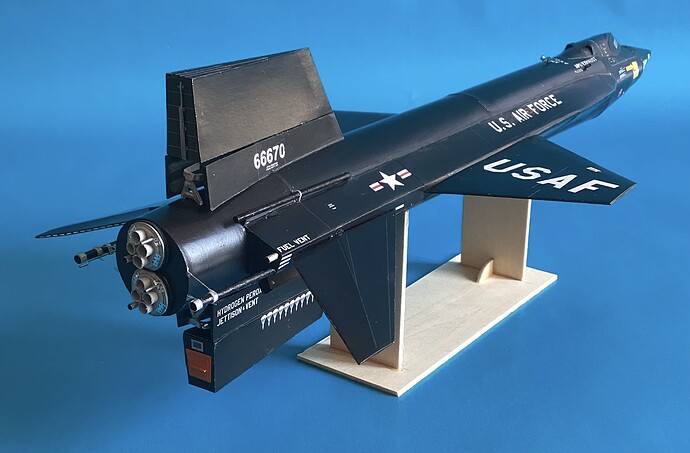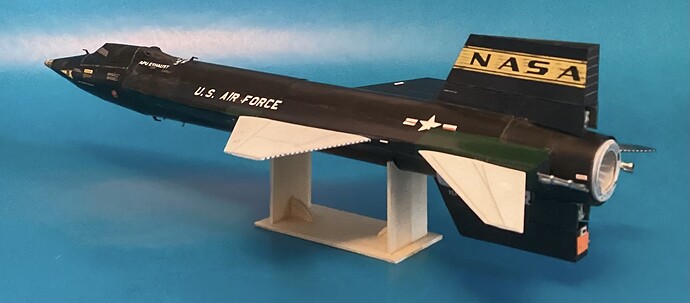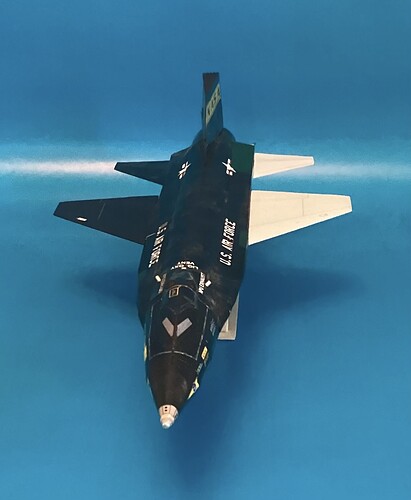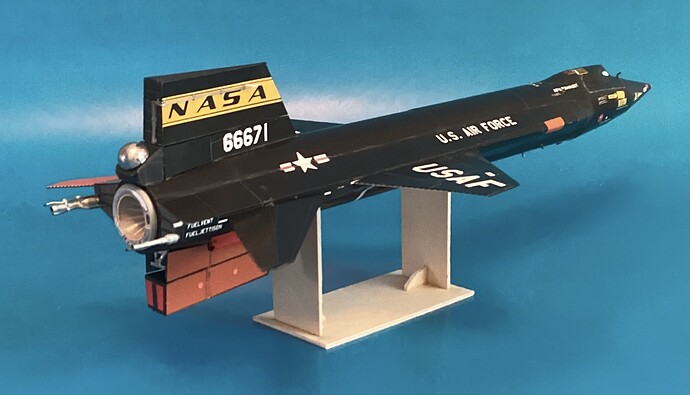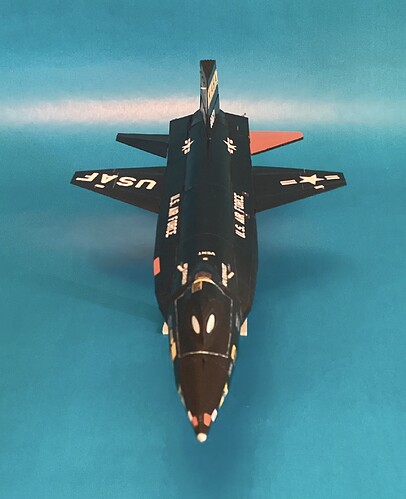Here are three more X-15s in 1/48th scale. Each is built from 170gsm glossy card and each has plenty of scratchbuilt detail to improve accuracy and/or add things the kits left off.
For example, the kits’ dorsal and ventral stabilizers each come as two pieces. Total. My scratchbuilt versions are made of 15 pieces each, and I separate the moveable rudder from the fixed stub. In photos of the real thing, you can see daylight between the two pieces, so you’d see it in 1/48th scale, too. (How the various — and pricey — plastic and resin models of the X-15 miss that detail is beyond me….)
The first is X-15-1, 6660, as it appeared on Flight 1-19-32 on 9 December 1960. It was Neil Armstrong’s second X-15 flight and the program’s first use of the Q-Ball Flight Path Control Sensor system instead of the long nose boom. The main reason I wanted to model this flight was there were some interesting markings and an odd bit of plumbing — a tube on the aft fuselage that was probably an alternate hydrogen peroxide vent. So far, I can’t find any other flights it was fitted on.
The second one is X-15-2, 66671, as it appeared on Flight 2-19-35, flown by Forrest Petersen on 28 September 1961. On this flight, 66671 carried two different types of temperature-sensitive paint on the left wing and tailplane, the main landing gear and various panels on the side tunnels. Some of the paint was gray, while some was green. The paint turned different colors depending on the heat it was exposed to, allowing technicians to determine how hot various parts of the airframe got in flight.
The third build is the X-15A-2, 66671, as it appeared on Flight 2-44-79, flown by Robert Rushworth on 18 May 1966. The vehicle sported test patches of an orange ablative material on the ventral stabilizer, side tunnels, nose gear door and the upper surface of the left tailplane. It had white camera calibration stripes underneath. There was also an airflow-measurement rake on the right side of the dorsal rudder.
